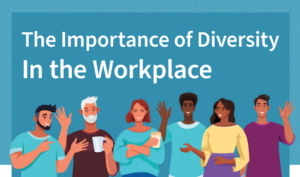
Belonging: Where Does It Fit Into Your Work Culture?
We all share a deep desire for belonging. From Abraham Maslow to Brené Brown, experts agree that this “indescribable feeling of being welcomed” is a

We all share a deep desire for belonging. From Abraham Maslow to Brené Brown, experts agree that this “indescribable feeling of being welcomed” is a

Millions of Americans have left the workforce due to the ongoing public health crisis of the COVID-19 pandemic. This situation has particularly impacted female employees

The last year and a half has been a reckoning for workplaces; companies addressed the paradigm-shattering COVID-19 crisis, while also addressing issues of social injustice

One year after the onset of the global pandemic, there is light at the end of the tunnel. Economies are opening back up, the vaccine

COVID-19 inevitably uprooted the way our society works. Due to the pandemic, organizations have uncovered cracks in their foundations that shed light on long-standing social

A recent study revealed that roughly 40% of U.S. companies offer paid parental leave for both parents. Many publications, including the survey itself, highlighted this

Women in the workforce have always faced a lack of upward mobility, unequal pay, and suppression of our talent in the workplace. Now, let’s add

Businesses don’t tend to thrive in an echo chamber. In fact, precedent shows you need the contribution of multiple perspectives to inform processes, build a

How do you defeat unconscious bias? First, you need to know what it is. Unconscious bias (also known as implicit bias) refers to unconscious forms

Even with vaccinations in sight, COVID-19 continues to ravage world health and drag economies downward. The resulting recession – the shecession – in the United

Throughout my conversations with people in the world of work, I hear these questions every March — about the time we start celebrating Women’s history

Workplace diversity is not a new topic. And yet, the world of work hasn’t made nearly enough progress in gender, cultural, and ethnic diversity. The

We’ve recently come to understand how diversity affects us all — in society and the workplace. But there are forms of diversity we don’t talk

How will the remote work era impact your 2021 DEI efforts? How will you keep the promises made around diversity, equity, and inclusion? Before remote

In this extrovert-biased world of ours, the squeaky wheel gets the grease. Many job candidates aren’t making it past the hiring process to get the

Recently I published an article on Forbes.com about the elephant in the room. It was one of those pieces I had to do. I had